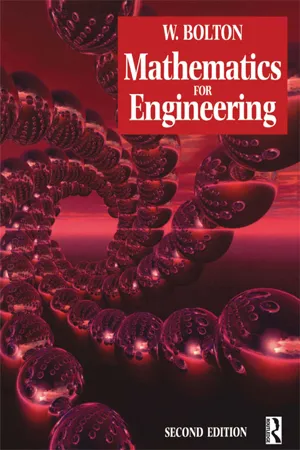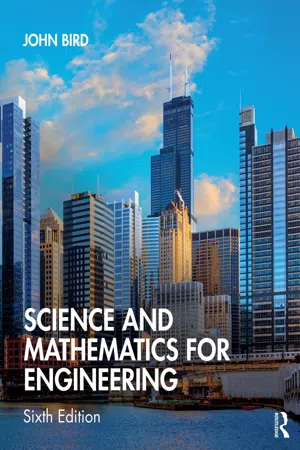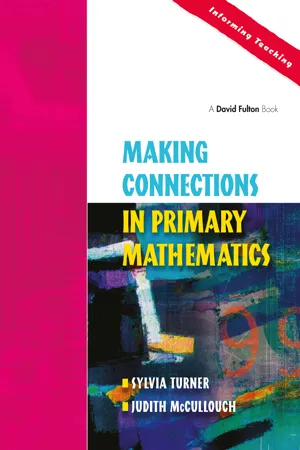Mathematics
Area and Volume
Area refers to the measure of the surface enclosed by a shape, such as a square or circle, and is typically expressed in square units. Volume, on the other hand, refers to the measure of the space occupied by a three-dimensional object, such as a cube or sphere, and is typically expressed in cubic units. Both area and volume are fundamental concepts in geometry and calculus.
Written by Perlego with AI-assistance
Related key terms
7 Key excerpts on "Area and Volume"
- eBook - ePub
Learning and Teaching Early Math
The Learning Trajectories Approach
- Douglas H. Clements, Julie Sarama(Authors)
- 2020(Publication Date)
- Routledge(Publisher)
11 Geometric Measurement1Area, Volume, and Angle
I had a student who basically understood the difference between area and perimeter. I drew this rectangle on a grid. To figure the area, she counted down like this (Figure 11.1a ), then she counted across like this (Figure 11.1b ). Then she multiplied 3 times 4 and got 12. So, I asked her what the perimeter was. She said it was “the squares around the outside.” She counted like this (Figure 11.1c ). She understood the perimeter, she just counted wrong. She was always off by 4.Do you agree with this teacher? Does the student understand area and perimeter and distinguish between them? What would you have asked the student to find out for sure?Figure 11.1 A student works with a perimeter problemArea Measurement
Area is an amount of two-dimensional surface that is contained within a boundary. Area is complex, and children develop area concepts over time. Sensitivity to area is present in the first year of life, as is sensitivity to number. However, infants’ approximate number sense is more accurate than their corresponding sense of area. So, even infants find area challenging!Area understandings do not develop well in typical U.S. instruction and have not for a long time. Young children show little explicit understanding of measurement. Primary graders, asked how much space a square would cover, used a ruler (once) to measure. Even with manipulatives, many measured a length of a side of a square, then moved the ruler to a parallel position slightly toward the opposite side, and, repeating this process, added the values of the lengths (Lehrer et al., 1998b). Limitations in knowledge are also shown by preservice teachers, as the opening story illustrates.To learn area measurement, children must develop a notion of what area is, as well as the understanding that decomposing and rearranging shapes does not affect their area. Later, children can develop the ability to build an understanding of two-dimensional arrays and then to interpret two lengths as measures of the dimensions of those arrays. Without such understandings and abilities, older students often learn a rule, such as multiplying two lengths, without understanding area concepts. Although area measurement is typically emphasized in the elementary grades, the literature suggests that there are some less formal aspects of area measurement that can be introduced in earlier years. - eBook - ePub
- Christine Hopkins, Ann Pope, Sandy Pepperell(Authors)
- 2013(Publication Date)
- David Fulton Publishers(Publisher)
Often there is more than one way of measuring a particular attribute but some units might aid more efficient calculation. In measuring area (surface) the approach is to visualise the surface as a grid of squares which can be counted. In fact any tessellating shape will do because these cover the surface without gaps, ensuring all the surface is accounted for. However, squares are generally considered more convenient because they produce clear rows and columns, which means any shape can be thought of as a sum of rectangles, and the area of a rectangle can be calculated using multiplication.SCALES
Nearly all aspects of measure involve the reading of some kind of scale, such as rulers, graded containers or kitchen scales. The continuous nature of measure is explicit on an analogue scale like a ruler and when reading scales the subdivisions of units are seen to be important in determining levels of approximation and accuracy. They are read ‘to the nearest…’. More sensitive scales which can represent very small units such as milligrams might be needed in some circumstances such as weighing out medicines while in others, such as buying food, weighing to the nearest 25 grams might be sufficient. With digital displays, however, the need to interpret scales is removed and the continuous nature of measure is less explicit because a discrete value is displayed. If a shopper asked for 500 g of fish at the supermarket the amount weighed will never be exactly that. It might show as 478 g on a digital display and cause the pointer on an analogue scale to move close to the 500 g mark and the shopper will need to decide whether they want fish a little over 500 g or a little under for their purposes.Mathematicians have devised methods of measuring the length, Area and Volume of increasingly complicated shapes.MEASURING DISTANCE
PERIMETER
The perimeter of a closed shape is the total distance round the edge of the shape.Perimeter of a circle
The distance around a circle is known as the circumference.1. Take a 1 × 1 square.2. Fit a circle inside.3. The length of the diameter is 1. 4. The perimeter of the square is 4. The circumference of the circle is less than 4. - eBook - ePub
- Douglas K. Brumbaugh, Peggy L. Moch, MaryE Wilkinson(Authors)
- 2004(Publication Date)
- Routledge(Publisher)
The third variable, n, tells the number of triangles that are needed, in this case 6. Fig. 5.13 Your Turn 22. Use the formula,, to find the area of a region defined by a regular octagon with sides of length 4 cm and an apothem of length 4.828 cm. Volume Just as area is directly measured using a two-dimensional model, volume can be measured using a three-dimensional model. For example, how many rolls of quarters will it take to exactly fill your sock drawer? You might decide that you need to break your unit roll into 40 subunits or disks in order to completely fill the space and obtain a reasonably close approximation of the volume. Perhaps you would like a more convenient unit, such as a cube. How many sugar cubes will it take to fill your coffee mug? If your mug is a cylinder rather than a right, rectangular-based prism, then you will find that you must develop (or recall) some estimation strategies. As you stuff the cubes in the cup, some of them will be out of sight. In our discussion about area, we talked about covering a region with unit squares. For volume, we could use a unit cube whose face is the same size as the unit square that was used to discuss area. Suppose a rectangle is 8 units long and 3 units wide. From the area work, the rectangle would be covered by exactly 32 unit squares. We could place a unit cube on each of those squares, as shown in Fig. 5.14, and now a wondrous thing has happened. That rectangle we used to discuss area is still visible (the tops of the cubes), but there is now a depth factor as well. Counting the cubes, rather than the top face of each cube, tells us that the figure has a volume of 32 unit cubes. We have a length of 8 units, a width of 4 units, and a height of 1 unit, giving a total of 32 unit cubes. If a second layer of cubes is placed on top of the first, then the length is still 8 units, the width is still 4 units, but the height is now 2 units, and now we have used 64 unit cubes - eBook - ePub
- W Bolton(Author)
- 2012(Publication Date)
- Routledge(Publisher)
Engineers need to be able to solve problems involving the perimeters and areas of simple two-dimensional shapes such as rectangles, parallelograms, triangles, trapeziums, circles and compound shapes built up from the basic simple shapes. They need to be able to determine the surface areas and volumes of three-dimensional shapes such as cylinders, cones, spheres, pyramids, prisms and compound shapes built up from the basic simple shapes. In addition, they need to be able to determine irregular areas, such as those under some graphs, and irregular volumes. This chapter is about the techniques of determining the above quantities.2.2 Areas and perimeters
The following are basic two-dimensional shapes:Figure 2.1 Basic shapes1 RectangleA rectangle of length l and breadth b (Figure 2.1(a) ) has an area of:area = l × band a perimeter of length 2l + 2b.2 TriangleA triangle with a base b and height h (Figure 2.1(b) ) can be considered to be parts of two rectangles, with the diagonals of the rectangles forming the sloping sides of the triangle. The area of the triangle is half the sum of the areas of the two rectangles and thus has an area of:area = ½b × hSometimes we are not given the vertical height of a triangle but the lengths of its sides and its internal angles. We can often use trigonometry to calculate the vertical height. Thus, for the triangle shown in Figure 2.1(b) , we have h/L = sin θ.3 ParallelogramA parallelogram of length l and breadth b (Figure 2.1(c) ) can be considered to be divided by a diagonal into two triangles and, since each triangle has an area of ½b × h, has an area of:area = l × b4 TrapeziumA trapezium with parallel sides b and a separated by a perpendicular distance h (Figure 2.1(d) ) can be considered to be divided by a diagonal into two triangles and, since they will have areas of ½ah and ½bh, will have an area of:area = ½h(a + b)5 CircleA circle with radius r (Figure 2.1(e) ), diameter d = 2r, has an area of:area = πr2 = 1/4πd2 - eBook - ePub
- John Bird(Author)
- 2019(Publication Date)
- Routledge(Publisher)
Chapter 14 Volumes of common solidsWhy it is important to understand: Volumes of common solidsThere are many practical applications where volumes and surface areas of common solids are required. Examples include determining capacities of oil, water, petrol and fish tanks, ventilation shafts and cooling towers, determining volumes of blocks of metal, ball-bearings, boilers and buoys, and calculating the cubic metres of concrete needed for a path. Finding the surface areas of loudspeaker diaphragms and lampshades provide further practical examples. Understanding these calculations is essential for the many practical applications in engineering, construction, architecture and science.At the end of this chapter, you should be able to:- state the SI unit of volume
- calculate the volumes and surface areas of cuboids, cylinders, prisms, pyramids, cones and spheres
- appreciate that volumes of similar bodies are proportional to the cubes of the corresponding linear dimensions
14.1 Introduction
The volume of any solid is a measure of the space occupied by the solid. Volume is measured in cubic units such as mm3 , cm3 and m3 .This chapter deals with finding volumes of common solids; in engineering it is often important to be able to calculate volume or capacity, to estimate, say, the amount of liquid, such as water, oil or petrol, in differently shaped containers.A prism is a solid with a constant cross-section and with two ends parallel. The shape of the end is used to describe the prism. For example, there are rectangular prisms (called cuboids), triangular prisms and circular prisms (called cylinders).On completing this chapter you will be able to calculate the volumes and surface areas of rectangular and other prisms, cylinders, pyramids, cones and spheres. Volumes of similar shapes are also considered.14.2 Calculating volumes and surface areas of common solids
Science and Mathematics for Engineering. 978-0-367-20475-4, © John Bird. Published by Taylor & Francis. All rights reserved.14.2.1 Cuboid or rectangular prism
- eBook - ePub
Teaching Mathematics in Primary Schools
Principles for effective practice
- Robyn Jorgensen(Author)
- 2020(Publication Date)
- Routledge(Publisher)
Using a sheet of grid paper, make as many different shapes as possible with four blocks. Colour the shapes different colours. What is the area and perimeter of each of the shapes? Record the results in a table. What do you notice?is Area of Rectangles, available at: www.coninionsensemedia.org/appreviews/area-of-rectangles-interactive-lesson.Practical, real-life contexts can provide a stimulating learning context. The relationship between a fence (perimeter) and a garden bed is one example that links to real contexts (Selmer et al. 2016). Farming contexts, which also feature paddocks, fencing and farming (grazing cattle or cropping), can extend understanding of the relationship between perimeter and area.Volume and surface area
Just as many students get confused with perimeter and length, many also become confused with volume and area (Gough 2004). There is a misconception that if one quantity (e.g. area) is constant, then the other measure (volume) is also constant. Folding a piece of A4 paper into quarters in both directions can result in different volumes, as can folding A4 paper into a cylinder in both directions. Students can apply this knowledge to packaging and environmental issues so that they can find out how best to pack items with minimum surface area and maximum volume. This knowledge is also useful for understanding how food manufacturers can increase the price of goods without the public becoming aware of it. Current practices have seen a number of manufacturers reducing the content of containers but changing the shape (surface area) so that they look the same, while charging the same amount of money.Teaching IdeaVolume and shapeUsing the same number of blocks, create different shapes. What is the surface area of each shape?- Record results.
Volume and shape
Just as with the other examples, shape and volume can develop some interesting misconceptions. Allow students to construct various shapes using blocks. Keep the number of blocks constant (i.e. volume) and see what shapes they can make. This relates to the example above, but without formally acknowledging surface area. - eBook - ePub
- Sylvia Turner, Judith McCulloch(Authors)
- 2017(Publication Date)
- Routledge(Publisher)
Using and applying measurement has a clear but tenuous link with shape and space. Shape, space and measures relate to geometric problems. If considering application of measurement there is a tendency to relate it only to the dimensions of shape and space that often leads on to everyday life projects, e.g. calculating the costs of activities such as redecorating a bedroom or packaging solutions. Children, however, need to consider the concept of measurement and its connection to shape and space, not merely how to calculate working with the dimensions of shape and space. Why do we use different units of measurement? What is the equivalence between these different units? How appropriate are those units to problems that need to be solved?Your mathematics
You may find that you have forgotten much of what you learnt at school about shape, space and measures simply because you are not using and applying it to everyday life or other areas of mathematics. It is difficult to define what you need to know in order to help children use and apply shape, space and measures. Knowledge and understanding of shape, space and measures gives teachers the confidence they need to structure children's learning so that they have the opportunities to solve problems, communicate and reason. Taking this perspective, teachers have to be secure in the knowledge of properties of shapes and units of measurement.Look in Mathematical Vocabulary (NNS 1999) at the vocabulary used in Year 6 for shape, space and measures. Check your understanding of the terminology with a mathematical dictionary.Reasoning and proof
In addition to knowledge of properties of shapes and units of measurement, teachers need a clear understanding of mathematical reasoning and proof. This enables them to make effective connections between shape, space and measures and other aspects of mathematics.Primary children are expected to develop their assumptions or conjectures about specific examples to explore whether they can make generalisations. They do not, however, need to develop generalisations to formal proof - rather, they need to develop explanations to show why their generalisations are valid. Nevertheless, teachers need to be aware of the sorts of examples that may occur at primary level and to what types of proof they relate:
Learn about this page
Index pages curate the most relevant extracts from our library of academic textbooks. They’ve been created using an in-house natural language model (NLM), each adding context and meaning to key research topics.






